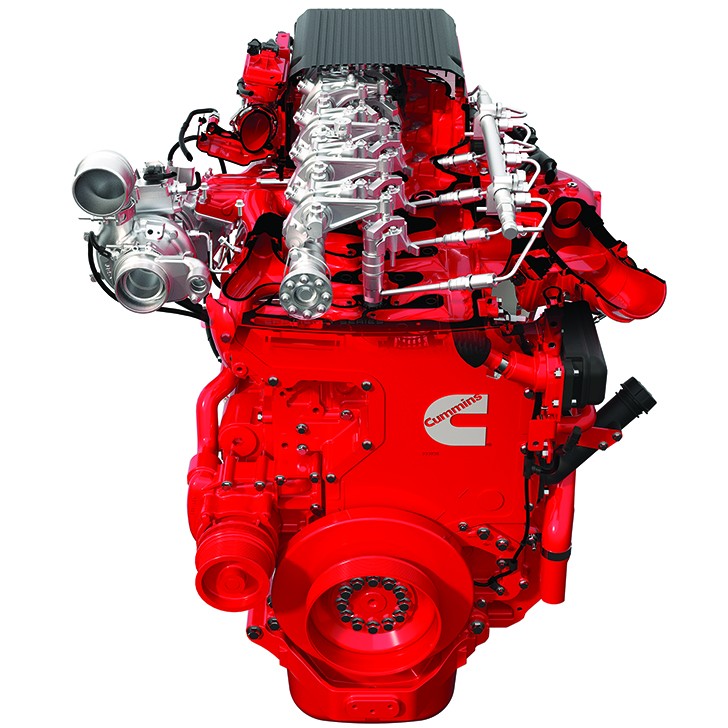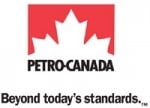Lubricants in Heavy-Duty Operations
Brian Humphrey, OEM Technical Liaison, Petro-Canada Lubricants, offers tips for getting the most out of the new heavy-duty diesel engine oils

The recent legislative changes aimed at lowering carbon emissions have had a transformative effect on the heavy-duty diesel engine market.
In December 2016, the North American heavy-duty lubricant market witnessed the biggest specification overhaul in its history, with the launch of two new API heavy-duty diesel engine oil categories: API CK-4 and FA-4. The driving force behind this new category was an industry-wide demand from the Environmental Protection Agency (EPA) and the National Highway Traffic Safety Administration (NHTSA) for a reduction in exhaust emissions and to address the requirements of modern engines and aid Original Equipment Manufacturers (OEMs) in meeting challenging and stringent emissions targets.
So, how can heavy-duty truck and off-road equipment operators make the most of the new oils and what do they need to know?
API CK-4 learnings
In the six months since the launch, we have found transition from API CJ-4 to CK-4 seamless, as a result of our extensive investment to prepare in the months, and years, leading up to the launch. We've already seen fleet owner operators and managers eager to take advantage of the performance benefits of API CK-4 oils. These benefits include enhanced fuel economy (where lower viscosity oils are used), extended drain intervals and higher levels of wear protection.
Customers have told us that their transition to our DURON Next Generation CK-4 oils has been very successful. We believe that is testament to the preparation, education, communication and planning that took place in the lead-up to the launch.
These new oil categories present an opportunity to improve the carbon footprint of fleet businesses, reduce equipment downtime, deliver savings through lower maintenance costs and increase the productivity and profitability of fleet operations.
As with all business decisions, clear understanding and early adoption could result in a genuine competitive edge, and that has certainly been the case in the six months since the new oil specifications were introduced.
Engine oil selection tips
The API heavy-duty oil categories are developed via an industry "consensus" process which requires all participants to agree on the needs and testing requirements defining the oil quality. This results in a definition which is the minimum baseline quality level all participants can agree upon.
Following the introduction of the new API CK-4 and FA-4 oil categories, we also saw OEMs come out with their own tests and pass/fail requirements to ensure the oils will meet their specific engine needs. This is common when a new category is introduced to the market, and no different with CK-4/FA-4 oils.
We strongly advise fleet operators to consult their engine/vehicle OEMs to ensure that they are using the correct oil for their vehicle. When considering any engine oil viscosity grade change, you should always consult with your equipment OEM who will be able to confirm if your warranty will be affected.
Even if you are not under warranty, your OEM will have extensive and valuable experience and will have tested its models in various environments and with various engine oils. As API FA-4 oils have been specifically designed for 2017 on-highway engines, we expect to see adoption of this category build from now onwards as OEMs release their recommendations. The speed of adoption will be driven by those OEM recommendations and the purchases of newer 2017+ engines.
The role of oil analysis testing
In terms of fleet maintenance, continued investment should be a key priority. For owners and operators, there are numerous benefits to implementing an effective used oil analysis program.
A good program is part of a sound maintenance regime, and is a cost-effective tool that can monitor oil condition in gasoline, diesel, propane and compressed natural gas-fuelled engines, automotive transmissions and final drives, along with heavy industrial equipment such as gear drives and hydraulic systems.
Oil analysis typically involves three steps: taking a representative sample from the equipment, sending the sample to a qualified used oil analysis lab, and interpreting/acting on the results. Oil analysis is most effective when performed at regular intervals, so that a trend can be generated and used to improve performance and efficiency of your equipment.
By evaluating the condition of your lubricant and equipment on a routine basis, minor mechanical problems are discovered before they become serious and expensive to fix.
In truck fleets, oil analysis can also help you identify ingested contaminants such as dust, dirt and water, as well as system contaminants like fuel, glycol (coolant) and soot, which can all lead to increased wear or even a catastrophic equipment failure. Testing can detect these impurities and measure their concentration, showing you how and why your machinery is wearing and help to identify the source(s) of contamination. If a fleet owner wants to extend their drain intervals, as well as improve efficiency and fuel consumption, it is imperative that they implement a used oil analysis program.
Fuel economy
In today's tough economic climate, many industries are facing challenging operating conditions and a variety of business pressures. For fleet managers, fuel is one of the biggest operating costs, so, in the long run, even marginal gains to fuel economy can make a big difference to a business's bottom line.
However, improving fuel economy is no longer just a business concern. In the United States, the Environmental Protection Agency and the Department of Transport have introduced new regulations for Class 8 trucks, requiring that their fuel economy increase up to 40 percent by 2027.
These new standards are, collectively, expected to lower CO2 emissions by approximately 1.1 billion metric tons. This will save vehicle owners an estimated $170 billion in fuel costs and reduce oil consumption by up to two billion barrels over the lifetime of the vehicles sold under the program.
The response of OEMs to end-user demands, and these legislative changes, has been to develop smaller, more efficient engines that can run on lower viscosity oils which, in turn, can deliver improved fuel economy.
There is still some way to go to reach the 2027 emissions requirement, however, API CK-4 and FA-4 oils are one of the key factors in the industry's attempts to meet the new target. This is due to the fact that their design reflects the needs of current and future engine hardware; both oil categories deliver improved fuel economy for end users and help reduce the environmental impact of heavy-duty diesel engines.
Company info
2310 Lakeshore Road West
Mississauga, ON
CA, L5J 1K2
Website:
www.lubricants.petro-canada.ca



